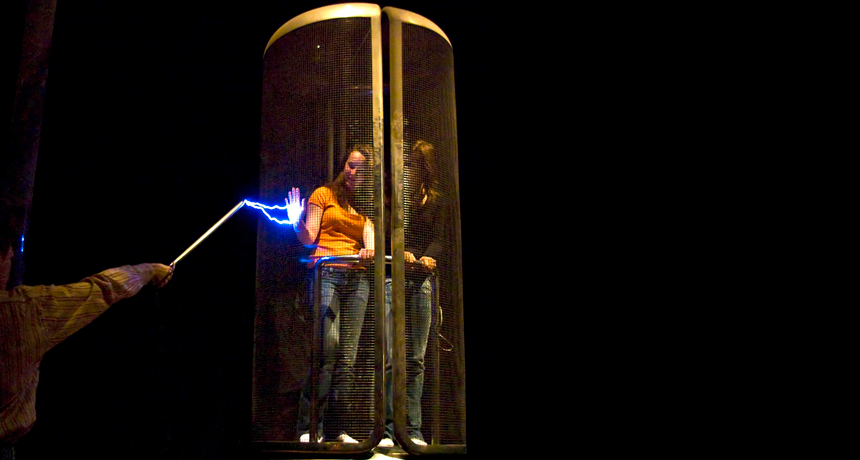birds Warm-blooded animals with wings that first showed up during the time of the dinosaurs. Birds are jacketed in feathers and produce young from the eggs they deposit in some sort of nest. Most birds fly, but throughout history there have been the occasional species that don’t.
copper A metallic chemical element in the same family as silver and gold. Because it is a good conductor of electricity, it is widely used in electronic devices.
electricity A flow of charge, usually from the movement of negatively charged particles, called electrons.
electromagnetic An adjective referring to light radiation, to magnetism or to both.
electromagnetic radiation Energy that travels as a wave, including forms of light. Electromagnetic radiation is typically classified by its wavelength. The spectrum of electromagnetic radiation ranges from radio waves to gamma rays. It also includes microwaves and visible light.
Faraday cage A screening or other metallic enclosure, sometimes shaped like a box, to distribute an electrical charge associated with electromagnetic radiation around some protected area. This prevents the electrical charge from getting in, where it might destroy or disrupt fragile electronics (such as computer chips). The system is named after chemist Michael Faraday , who made pivotal early discoveries about the nature of electricity.
field A region in space where certain physical effects operate, such as magnetism (created by a magnetic field), gravity (by a gravitational field), mass (by a Higgs field) or electricity (by an electrical field).
metal Something that conducts electricity well, tends to be shiny (reflective) and malleable (meaning it can be reshaped with heat and not too much force or pressure).
smartphone A cell (or mobile) phone that can perform a host of functions, including search for information on the internet.
